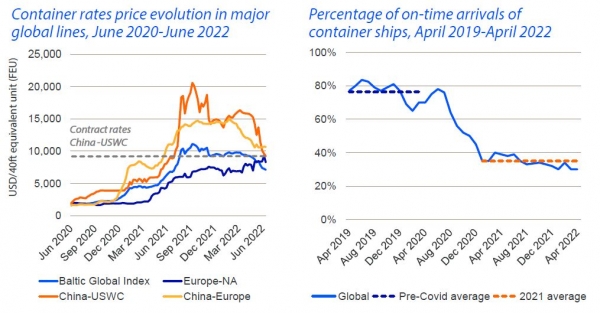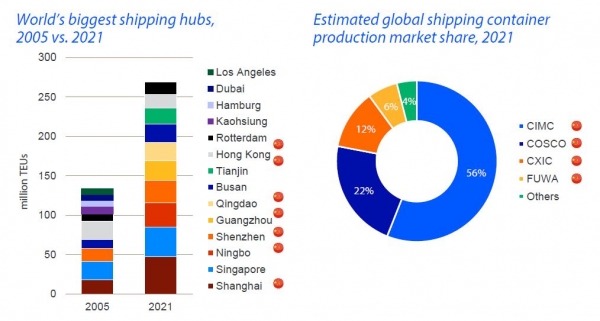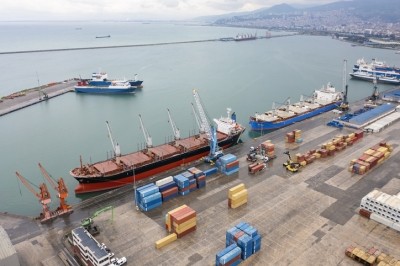Challenging freight conditions to stay: How food industry and agribusiness sector can build resilience

The team says this is down to structural factors such as heightened inflation plus all-time low consumer confidence exerting negative pressure on ocean rates, imbalanced global trade flows removing container capacity from network circulation, geopolitical uncertainties adding risks to the sector and growing operation costs from energy and sustainability regulation.
“Even though spot rates have recovered from the irrational levels of Q4 2021, they remain three to five times above pre-2020 levels. Contract rates have also jumped significantly and remain elevated,” said the analysts.
Port congestion
Schedule reliability also dropped, from 70% to the 30% range. The second quarter of 2022 saw that start to recover gradually, according to the authors.
Port congestion is a major contributor to such challenges, and while various processes have been implemented to improve efficiency, a lack of coordination with hinterland logistics – truckers and warehouses – as well as labor shortages, disrupted trade flows as a result of the Black Sea conflict, and a lack of automation continue to pose a threat to port operations and growth.
The authors forecast that congestion will remain a challenge at key ports until H1 2023. “European ports remain at high congestion levels.”
Container capacity
Record freight rates are the direct result of consolidation in the industry over decades, noted the report.
While a significant amount of profit has been reinvested into expanding ship fleets and container capacity, Rabobank does not expect rates to return to pre-pandemic levels. “Carries have mastered the art of adjusting supply according to demand by take ships on-or offline with precision, as we have seen in the past two years,” alleged the analysts.
In addition, they said a lot of the capacity growth will come from giant container ships. “They save cost for carries but are a major cause of port congestion.”
Russia-Ukraine war
The impact of the Russia-Ukraine war on container shipping is not catastrophic but it creates more uncertainty in an already challenging market, especially in dry bulk shipping, commented the freight specialists.
The war also disrupts China-Europe rail freight. “The missing rail volume will put further capacity pressure on ocean shipping and port congestion in Europe.”
Trade flows
Imbalanced global trade flows hinder a cost-effective repositioning of empty containers. “The situation is worse for reefer containers due to huge differences in imports and exports of agri-food commodities between regions. Nearly a third of reefer containers are currently stuck in Asia.”
Currently the global shipping sector is highly reliant on China, exposing it to geopolitical risks like trade wars between China and other major countries, found the publication. “China owns the busiest ports while supplying 95% of shipping containers in the world.”
Building resilience
The report outlines how food and agribusiness (F&A) companies have been responding to such challenging conditions, how they have been building resilience:
Given the uncertainties in ocean freight and the risk of supply chain disruptions, F&A companies are increasingly taking their outsourced logistics operations back in-house, noted the publication. “This allows for better control of supply chains and shorter lead times, but it usually only addresses one of the bottlenecks in the chain and may incur increased costs.”
Retailers like Walmart, Costco and Ikea are expanding into logistics to gain better control, and Lidl purchased ships to launch its own shipping line.
Amid the supply chain crisis, a group of meat producers in New Zealand chartered a specialized reefer container vessel to move their products to the US. “This horizontal collaboration enables the exporters to ensure products reach customers and avoids soaring shipping costs and port congestion," commented the analysts.
Diversification, localization
Rabobank said F&A players may also consider multi-sourcing, that is diversifying their supply chain, expanding sourcing regions beyond China:
“Southeast Asian countries such as Vietnam, Thailand, Malaysia, and the Philippines are promising destinations as they have many similarities to China in terms of exports. However, their logistics infrastructures and connectivity are not ready to accommodate a large part of China’s production. Significant investments in energy infrastructure, container ports and inland logistics will be needed.”
Companies may also look at friend-shoring, which is sourcing from a politically-aligned region to reduce risks and tariffs as geopolitical tensions increasingly impact the global supply chain.
In addition, they might assess the merits of localization, bringing the supply chain closer to home, due to inflated logistics costs and growing pressure from value chain emission regulations, said the analysts.










